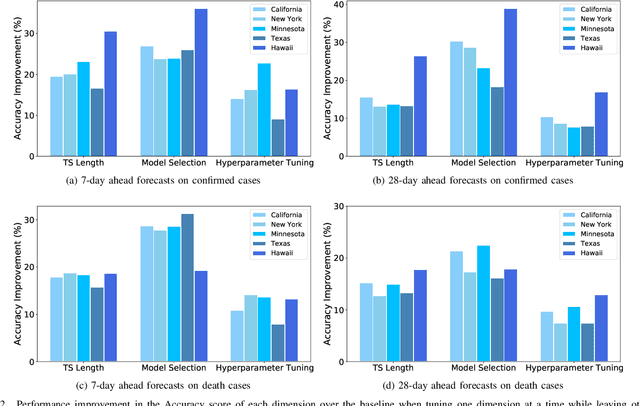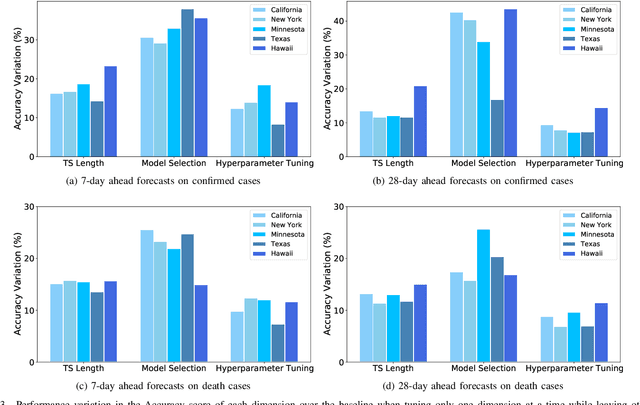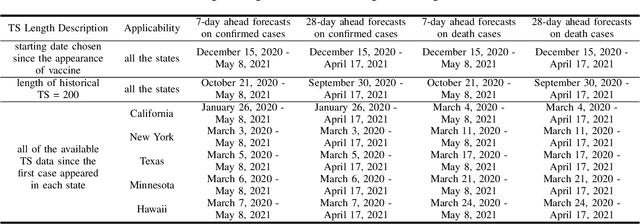Zhenni Xu
Empirical Quantitative Analysis of COVID-19 Forecasting Models
Oct 01, 2021



Abstract:COVID-19 has been a public health emergency of international concern since early 2020. Reliable forecasting is critical to diminish the impact of this disease. To date, a large number of different forecasting models have been proposed, mainly including statistical models, compartmental models, and deep learning models. However, due to various uncertain factors across different regions such as economics and government policy, no forecasting model appears to be the best for all scenarios. In this paper, we perform quantitative analysis of COVID-19 forecasting of confirmed cases and deaths across different regions in the United States with different forecasting horizons, and evaluate the relative impacts of the following three dimensions on the predictive performance (improvement and variation) through different evaluation metrics: model selection, hyperparameter tuning, and the length of time series required for training. We find that if a dimension brings about higher performance gains, if not well-tuned, it may also lead to harsher performance penalties. Furthermore, model selection is the dominant factor in determining the predictive performance. It is responsible for both the largest improvement and the largest variation in performance in all prediction tasks across different regions. While practitioners may perform more complicated time series analysis in practice, they should be able to achieve reasonable results if they have adequate insight into key decisions like model selection.
 Add to Chrome
Add to Chrome Add to Firefox
Add to Firefox Add to Edge
Add to Edge